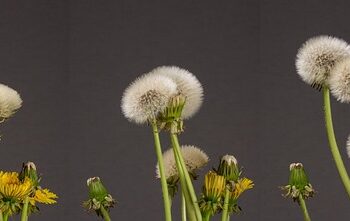Mastering the Art of Mindfulness: A Path to Inner Peace and Clarity
In today’s fast-paced world, it’s easy to feel overwhelmed and stressed. We’re constantly bombarded with information, distractions, and responsibilities that can leave us feeling anxious and disconnected from ourselves. However, there is a powerful tool that can help us navigate through the chaos and find a sense of inner peace and clarity: mindfulness.
What is Mindfulness?
Mindfulness is the practice of paying attention to the present moment without judgment. It involves being fully aware of your thoughts, feelings, sensations, and surroundings in a non-reactive way. By cultivating mindfulness, you can learn to observe your thoughts and emotions without getting caught up in them, leading to a greater sense of calm and clarity.
The Benefits of Mindfulness
There are numerous benefits to incorporating mindfulness into your daily life. Research has shown that mindfulness can reduce stress, anxiety, and depression. It can also improve focus, memory, and cognitive abilities. Additionally, practicing mindfulness can enhance relationships, increase self-awareness, and foster a greater sense of compassion and empathy towards others.
How to Practice Mindfulness
There are many ways to incorporate mindfulness into your daily routine. One of the most common practices is meditation, which involves sitting quietly and focusing on your breath or a specific object. You can also practice mindfulness while engaging in everyday activities such as eating, walking, or even washing the dishes. The key is to bring your full attention to the present moment and notice any thoughts or sensations that arise without judgment.
Tips for Mastering Mindfulness
Mastering mindfulness takes time and practice, but there are a few tips that can help you along the way. First, start small by setting aside just a few minutes each day to practice mindfulness. Gradually increase the amount of time as you become more comfortable with the practice.
Second, be patient with yourself. It’s normal for your mind to wander during meditation or for you to get distracted while practicing mindfulness. Instead of getting frustrated, gently bring your attention back to the present moment and continue with your practice.
Finally, find a mindfulness technique that works best for you. Whether it’s meditation, yoga, or simply taking a few deep breaths throughout the day, experiment with different practices until you find one that resonates with you.
Common Questions About Mindfulness
Is mindfulness a form of religion?
No, mindfulness is not tied to any specific religion. While it has roots in Buddhist meditation practices, mindfulness is a secular practice that can be incorporated into any belief system or lifestyle.
Can anyone practice mindfulness?
Yes, anyone can practice mindfulness regardless of age, background, or experience. It’s a simple and accessible practice that can be tailored to suit individual needs and preferences.
How long does it take to see the benefits of mindfulness?
The benefits of mindfulness can vary from person to person, but many people report feeling a sense of calm and clarity after just a few minutes of practice. With consistent practice, you can start to see more significant changes in your mental and emotional well-being.
Conclusion
Mastering the art of mindfulness is a powerful way to cultivate inner peace and clarity in a chaotic world. By practicing mindfulness, you can learn to be present in the moment, reduce stress and anxiety, and improve your overall well-being. Remember to start small, be patient with yourself, and find a mindfulness practice that works best for you. With dedication and practice, you can harness the transformative power of mindfulness and experience a greater sense of peace and clarity in your life.
Embrace the art of mindfulness and embark on a journey towards inner peace and clarity today.















